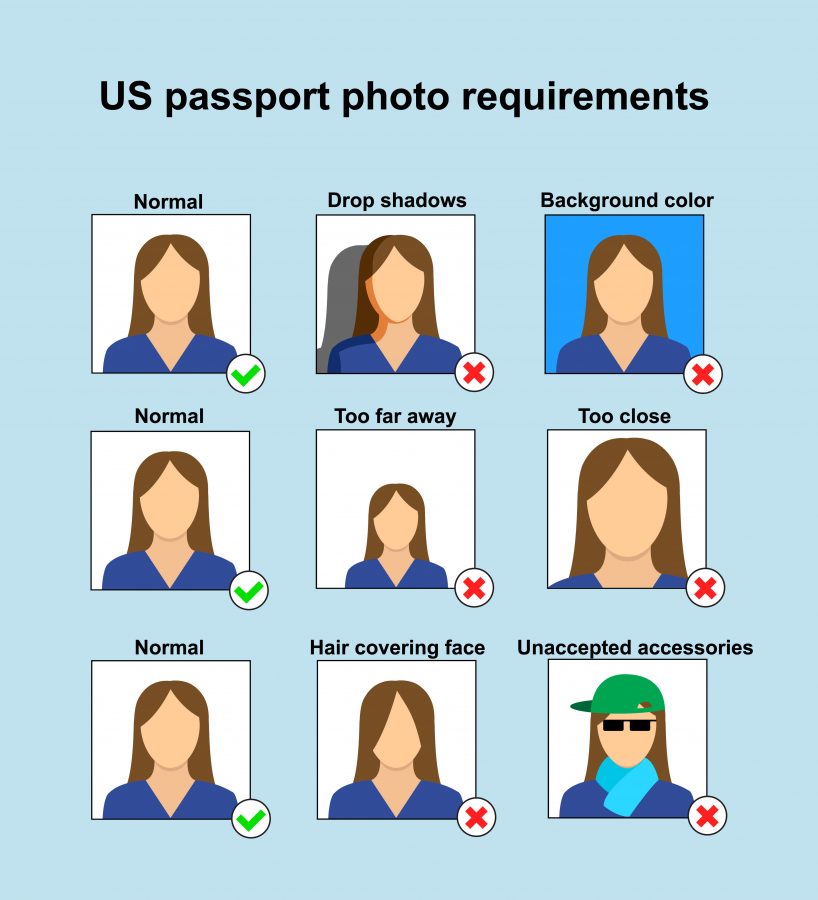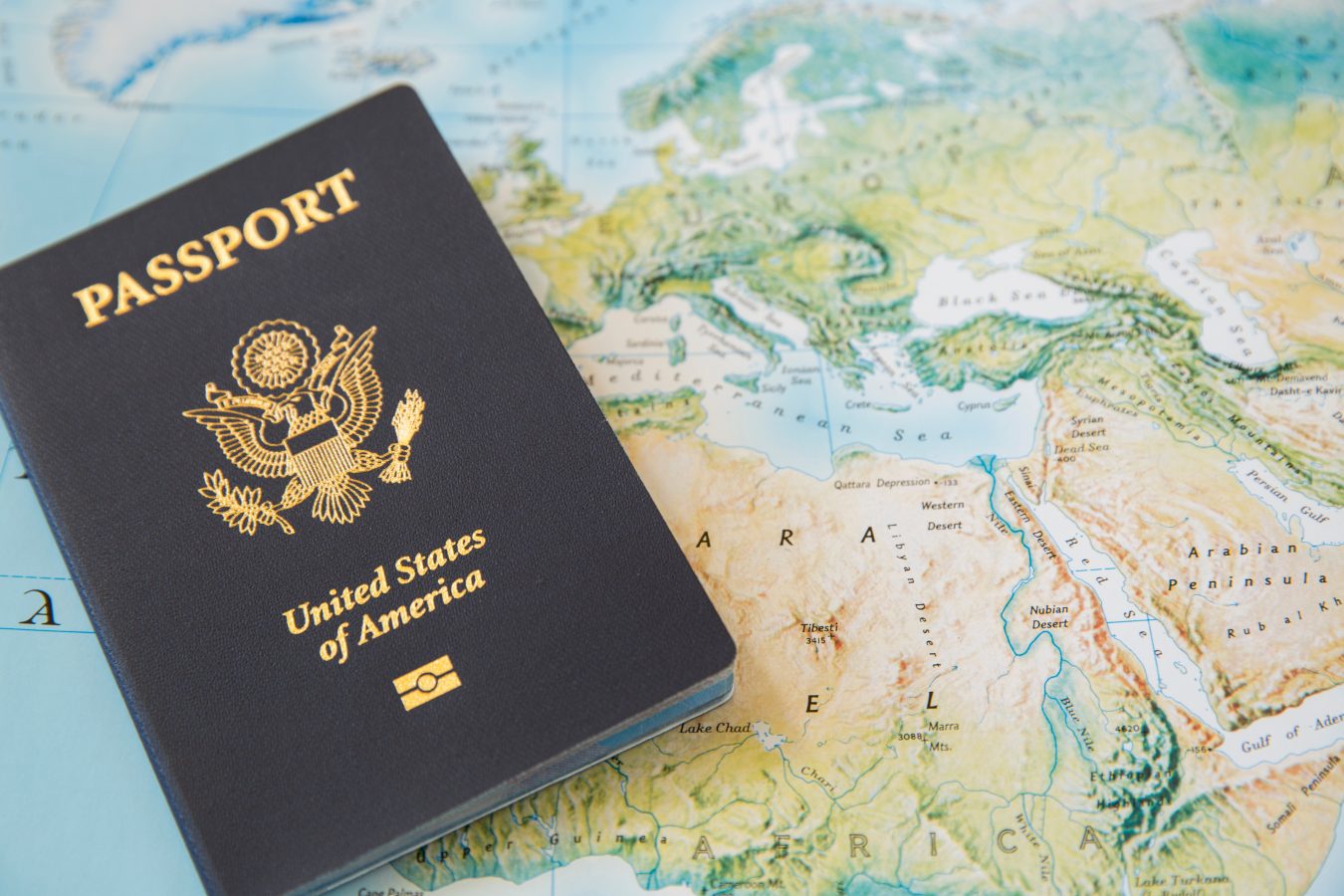If you made it to this page, you’re probably thinking about traveling the world. You’ve realized that if you are going to leave the country, you have to have a passport in hand and you’re thinking to yourself “ugh how do I even do that”. Well stop your panicking. We’ve got literally all the details on how to get a passport. Including, getting a first time passport, renewing an expiring or expired one, and some special case information. Feel free to scroll the blog or jump right to the section that you need: First time passport or renewing a passport.
How to get a passport for the first time
1. Gather your documents
To get a passport in the US, you will have to prove who you are. You’ll do this through proof of citizenship and a photo ID.
Examples of what you can use for proof of citizenship include:
- US birth certificate
- Certificate of naturalization
- consular report of birth abroad
Examples of what you can use for a photo ID include:
- Driver’s license
- Government/military ID
- Valid foreign passport
You must turn in an original and authentic version of your proof of citizenship. We highly recommend that you photocopy your document before turning in your application. This way, you maintain a version of your document until the government mails it back to you. Your photo ID will be checked over during your application appointment. But don’t worry – you won’t have to mail it in. You cannot mail in a photocopy of your proof of citizenship.
2. Get your passport photo
There are quite a few requirements and rules to the photo that you submit for your passport. While you can take your own, you must meet all requirements. If you are concerned about meeting all requirements on your own, there are a number of businesses that offer passport photos.
Places that will take your passport photo for you:
- Pharamcies/retail stores (CVS, Walgreens, Rite Aid, Walmart, Target, Costco, etc)
- Post offices
- Shipping/office supply stores (FedEx, UPS, Staples, etc)
- Photography studios
- AAA (if you’re a member)
- Passport acceptance facilities

If you wish to take your own passport photo, these are the requirements:
- Dimensions: photo must be 2×2 inches. From top of the head to bottom of the chin, head must measure 1 inch to 1 3/8 inches
- Recent: photo must be from within 6 months of application to reflect current appearance
- Background: must be plain white or off-white, with no shadows or patterns
- Facial expression: can be neutral or a natural smile. Both eyes must be open. No exaggerated expressions, including wide smiles or frowns
- Head position: must face the camera directly, with head centered in the frame, not tilted or turned
- Clothing: Everyday attire is acceptable. No uniforms, with the exception of religious attire worn daily. You cannot wear anything that obscures the face (hats, head coverings), with the exception of religious or medical reasons. If the case of exceptions, the full face must still be visible
- Glasses: No eyeglasses allowed, even if worn daily. Only allowed for medical reasons with a signed statement from a doctor
- Lighting: lighting must be even with no shadows on the face or background. Photo must show natural skin tones
- Resolution and quality: photo must be high resolution (not pixelated or blurry). Must have no editing, filters, or alterations (including no red-eye correction or background changes)
- Headwear: no hats, scarves, or head coverings, unless worn for religious or medical reasons. If wearing a head covering for religious purposes, the face must be visible from the forehead to the chin and the covering cannot cast shadows on the face
- Photo paper: photo must be printed on matte or glassy photo-quality paper. Digital copies or non-standard print materials are not allowed
- Children: for children’s passports, infants and young children must have their own photo, with no other people or objects visible, including parent’s hands or a car seat. For infant photos, a white blanket can be used as a background if the infant is lying down
We told you it was a lot!
3. Complete form DS-11
Fill out form DS-11. You can get the form from the US Department of State website or at a passport acceptance facility. Do not sign the form until you are told to do so by a passport acceptance agent during your application appointment.
4. Submit your form
Passport application forms must be submitted in person at an approved passport acceptance facility. Generally these facilities are at places like post offices or clerks of court. You can find your nearest one here. This is true for all applications that are not renewals (for renewal info, keep scrolling!). Typically, you’ll schedule an appointment at your facility. When you go in, you’ll bring your passport photo (or you’ll get it taken there), your documents, a completed but unsigned DS-11 form (or you’ll fill one out at the facility), and your payment method for the fees.
5. Pay the fees
The cost of a passport depends on what kind you are getting. For a typical passport book, which is what most people picture when they think of a passport, it’s currently $130 (for adults). The alternative option is a passport card, which is only $30 (for adults). However, passport cards can only be used on land border crossings to Canada or Mexico. So if you plan to travel anywhere else, you’ll need to get the book.
There’s no discount for getting both, so if you want to get a book and a card it’s $160. Although, honestly, unless you’ll be doing a ton of land border crossings and will find it too inconvenient to carry your book, it’s really not necessary to get both.
There is also an execution fee of $35 which goes to the acceptance facility.
If you’ll be expediting your application because you need it faster, it’s $60.
You can pay the fees with cash, check or a money order.
6. Processing time
Processing times for passport applications can fluctuate quite a bit depending upon how many other Americans are submitting applications. Oftentimes, the wait time can be 10-13 weeks, with expedited applications being 7-9 weeks.
As of the time of posting, the current wait times are 6-8 weeks or 2-3 weeks for expedited applications. You can always check the current wait times online.
If you are traveling international urgently and need your passport even faster, you’ll need to visit a regional passport agency and provide proof of your need for the passport being expedited faster. Note that these regional agencies are different from the approved passport acceptance facilities and there are a lot less of them in the country. So depending on where you live, you may have to travel to get to one. You can find the locations of the regional facilities here. You’ll also need to show them proof of international travel, such as flight itinerary, e-ticket, or other confirmation of your travel plans that shows your departure date.
The accepted reasons for this expediting and examples of proof of them are:
- Family emergencies: illness, injury, or death of a family member abroad where you need to travel urgently to provide care, attend a funeral, or handle family matters. Proof: death certificate, hospital statement, or a letter from a medical professional.
- Medical treatment abroad: if you need to travel abroad for urgent medical treatment non available in the US. Proof: letter from a healthcare provider outlining the need for medical treatment abroad.
- Business or work-related travel: urgent international business travel or work assignments might qualify if the trip is critical and cannot be postponed. Proof: letter from your employer or business indicating the urgency of the travel with details about the nature of the trip.
- School or study abroad: students traveling for study abroad programs within a short time frame might be eligible (meaning if possible, you shouldn’t count on getting the expediting and should do your best to submit your application with enough time to have it before you leave for your program). Proof: enrollment documents or program letters confirming the imminent departure date.
- Life events (weddings and adoptions): if you’re getting married abroad and need to travel urgently, you might qualify. If you need to travel overseas to adoption purposes within a short time frame, you might qualify. Proof: wedding invitation, adoption documents, or legal paperwork related to the event.
- Military deployment: active-duty members of the military who need a passport for deployment or official travel may be expedited. Proof: official military orders.
- Visa requirements: if you need to obtain a foreign visa and are within 28 days of travel, you may be eligible. Proof: letter or confirmation from the consulate or embassy of the country requiring the visa.

Renewing your passport
If you were over the age of 16 when you got your passport, then it’s valid for 10 years. If you were under, it’s only valid for 5 years. This means if you got a passport at age 16 it will expire at age 26, but if you got it at age 15 it will expire at age 20. The same validity is true for both passport books and passport cards.
For many countries, you cannot travel on a passport that is within 6 months of expiring. So make sure you plan ahead with renewing so that you aren’t trying to go abroad too close to the expiration date.
1. Confirm Eligibility
You have to be eligible to go through the renewal process and not the new passport one. To be eligible as a renewal – and not a new passport – your most recent passport must be:
- less than 15 years old
- obtained when you were at least 16 years old
- undamaged and able to submit
Unfortunately, this means that any passport you got as a minor (under 16) doesn’t allow you to renew and you will need to go through the new passport process detailed above.
2. Complete form DS-82
Passport renewals use form DS-82. You can find it on the US Department of State website.
3. Get new passport photo
All new passports (renewals including) will need a new passport photo. This way it reflects what you currently look like. The rules for a passport photo are the same for renewals as for new passports. To see all the rules, as well as what places you can go to get them taken for you, click here to be brought back up the page.
4. Mail your application
For renewals, you do not have to submit the application in person. Yay! Instead, you’ll mail in your completed form, old passport, new passport photo, and fee money. The mailing address is listed on the form.
We strongly recommend that you use a mail service with a tracking number for security. This will protect you from the possibility of your application getting lost in the mail.
5. Pay the fees
The fees for a passport renewal are the same as for a new passport. Passport books are $130 and passport cares are $30. For expediting your application, it is an extra $60. For renewals, you will not have the pay an execution fee.

Tracking your passport application process
About two weeks after submitting your application you will be able to track it’s status on the US Department of State’s website.
The application office mails new passports and citizenship documents separately (for security). So you’ll be on the lookout for two separate envelopes!
Special cases
Lost or stolen passport
If you have lost your passport or it was stolen from you, you’ll need to fill out two forms. File form DS-64 to report and then DS-11 to reapply for a new one.
Minors (under 16)
If you are getting a passport and are under the age of 16, there are extra requirements. Both parents or guardians will have the be present at the passport acceptance facility, provide parent consent, and fill out form DS-11.
Ta-da!
You made it to the end! That’s basically everything you could need to know about getting a US passport. Now you really have no excuse not to get one and start traveling the world.


